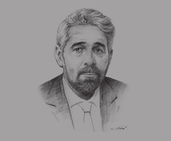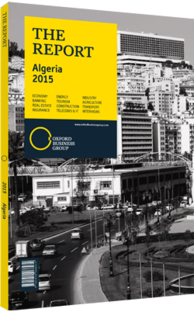Sid Ahmed Ferroukhi, Minister of Agriculture, Rural Development and Fisheries: Interview

Interview: Sid Ahmed Ferroukhi
How has Algerian agriculture performed over the past five years?
SID AHMED FERROUKHI: The first indicator is the growth rate, which is almost 11%, higher than that of the national economy as a whole. It should be noted that some sectors saw particularly strong growth. For example, we have doubled potato production over four years. Another important indicator is in job creation. We currently see a near-saturation of the available agricultural workforce.
We can also look at the diversity of production that exists in the markets, and the fact that a number of products, such as tomatoes and peppers, are no longer subject to seasonality. At the same time, for a number of sectors such as wheat and milk, there is growth in imported products. For these products, we have seen a double-digit growth in demand, so even as local supply increases it is challenging to follow such a steep demand curve. It is important to stress that the situation is complex, as these products also depend on changes in consumption from citizens, population growth and changes in purchasing power. If I had to summarise the main axes of our strategy, I would do it through what I call the rule of “4 Is”: investment, integration, innovation and irrigation.
What are the key challenges to ensuring the country’s food security in the future?
FERROUKHI: By moving towards heavily industrialised food production we expose ourselves to certain risks, such as the disappearance of traditional dietary patterns and health consequences that are not yet fully understood. On the other hand, the traditional model is no longer able to fully meet the needs of Algeria’s growing population.
Thus, a hybrid model is needed, whereby we modernise agriculture and increase output by mechanisation, whilst ensuring the quality and traceability of products. Simultaneously, we must try to unite and encourage small producers. The creation of a recognised “Made in Algeria” label will help to benefit small farmers and traditional products.
Algeria has segments with strong export potential such as market gardening, arboriculture and fishing.
Export markets are often highly structured and segmented, given the existence of purchasing centres and modern distribution channels. As such, partnerships are key to accessing these markets and to modernising techniques across the agricultural value chain. Each of these are essential elements as our country moves towards exporting.
We in the government strive to protect our farmers and our fishermen, and in parallel we have the ambition to create dynamic segments that can play a role in boosting our overall competitiveness.
What strategies does Algeria have in place for the development of the fishing industry?
FERROUKHI: Regarding cooperation for the fishing industry in the Mediterranean, it is important to maintain sustainable catch levels, which are between 120,000 and 150,000 tonnes. At the same time, we must develop the marine environment to preserve the diversity of the resource. The “Aqua-pêche” programme seeks to be the roadmap for the sector until 2030. This initiative is centred around the promotion of fisheries and aquaculture, supplying the market with quality products, and providing productive investment. We are ambitious and optimistic concerning both marine aquaculture and aquaculture in Algeria’s portion of the Sahara.
More than 600 projects will be implemented over the next five years, and it is clear that this sector offers many opportunities for partnerships in the areas of food, cages and production inputs. As for aquaculture, three projects will start production before the end of 2015 and more than fifty projects are already implemented or in the planning stage.
You have reached the limit of premium articles you can view for free.
Choose from the options below to purchase print or digital editions of our Reports. You can also purchase a website subscription giving you unlimited access to all of our Reports online for 12 months.
If you have already purchased this Report or have a website subscription, please login to continue.

